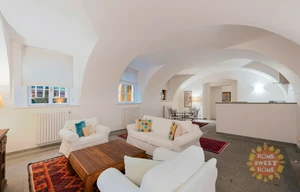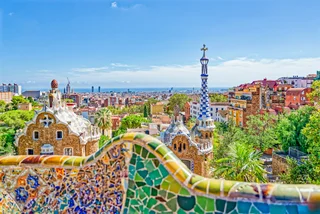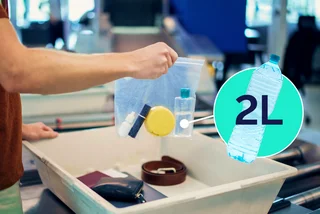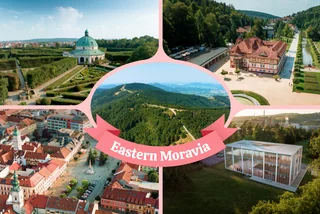Among the many renowned and revered sights that Prague has to offer, none are more edible than the Charles Bridge. Many legends are told about the ingredients that went into construction of this esthetically tasty bridge. There are reasons to believe that the bridge’s builders increased the hardness of the lime-based mortar used to bind the sandstones in the bridge with a mixture of eggs, milk and wine. Coincidentally, these are also the ingredients for syllabub, an old English drink with a funny name, and variations of French toast.
Apparently, King Charles IV, who commissioned the bridge, ordered eggs to be collected from villages all around the kingdom. One village (overthinking the royal decree) sent in boiled eggs, assuming this way they were less likely to get broken. People still make fun of this village of Velvary to this day.
Whatever its ingredients, Charles Bridge has certainly stood the test of times and of course is mostly made of stone. In fact, there is a popular legend (perhaps spurred on by the booming interest in the Kabbalah and other mystical traditions) that the foundation stone was put in on the 9th of July, 1357 at 5:31 AM. This specific date and time were chosen on advice of King Charles’s court astrologers as most auspicious based on their calculations. If you notice, the numbers are 1 3 5 7 9 7 5 3 1 or 1357 on the ninth day of the seventh month at 5:31 am are all odd and symmetrical read right to left or in reverse.
Interestingly, for all the thought and royal muscle King Charles put into creating this bridge, it has not actually born his name until 1870. The ungrateful bridge used to be called the Stone Bridge or the Prague Bridge till then.
The bridge’s construction, supervised by the famed architect Petr Parléř, was necessitated by the demise of Judith Bridge, one of the first stone bridges in Europe which was destroyed in the great flood of 1342. It took until the beginning of 15th century to finish building the new bridge. The result measures about 516 meters in length and is 9.5 meters wide. All this space was used as an important connection between Eastern and Western Europe, establishing Prague as a major trade center. Horse-driven carriages, trams and buses used to traverse the now pedestrians-only bridge at one time or another.

What is most fun, of course, are the stories that the bridge’s centuries-long life has spawned. One such great myth (perhaps created or enhanced during the Counter-Reformation by the Church) is the martyr-like death of one John Of Nepomuk. He was a priest who refused to give up Queen Sophia’s confessional secrets to her husband King Wenceslas IV. One romantic version of this story maintains that the King had reason to believe the Queen had a lover and wanted to find out his identity. For the disobedience, the King ordered John of Nepomuk tortured and dropped in a wooden basket into the Vltava river right from the Charles Bridge. John ended up drowning, but became a martyr and a Saint in the Church’s eyes. Some historians actually claim that there were two people with that name living and dying around the same time and the Church canonized the wrong one. But it’s rather too late to complain.
The story of John of Nepomuk has a few other shocking twists. Apparently, as he was thrown into the river, a part of the bridge broke off right at that moment. Many attempts were made to repair the broken arch and all failed. So one of the builders made a pact with the devil. He promised the devil the soul of the first being that would cross the repaired bridge (not clear on who gave this builder such authority). Of course, once the bridge was fixed, the builder tried to release a rooster to run across the bridge before anyone else, but the devil tricked the builder´s wife into running across the bridge first. So instead of the rooster’s soul, the crafty devil got the soul of the builder’s wife. The bridge, as such, is a place where the battle between good and evil takes place directly. Something to watch out for next time you stroll through it…

Another tidbit of mythological bliss is what happened at the moment John hit the river – five stars appeared in the water. The statue of John of Nepomuk on top of the bridge represents this with a five-star halo above his head. They are told to symbolize the five letters of Latin word “tacet”, which means “silent” but perhaps they were foreshadowing the creation of the European Union? There is a cross with five stars at the place on the bridge from which John was thrown into the river. If you place your hand on the cross, touching each star with one of your (five) fingers and wish for something – it will come true! You can also touch a plaque on the statue itself for same effect. It’s not told how being drowned in a river is a sign that you attract good luck but having touched these things, you are also supposed to come back to Prague soon (a part of the myth likely spread by the tourism department). John’s statue is 8th from the right if you are heading towards the Castle from the Old Town side. There are 30 statues in all (mainly of saints) that were installed mostly from 1706 till 1714. They were commissioned for the bridge by various leaders of the city and were created by the masters of Baroque sculpture like Matthias Braun and Jan Brokoff. In order to preserve the statues (especially after some of them were damaged by floods), the originals were moved to the National Museum and replaced by replicas.
Other statues also have great stories to tell. On one the bridge’s piers on the Mala Strana side is the sculpture of the knight and former Czech ruler Bruncvík. He had a magic sword that could behead any enemy all by itself (a fact that surely took some pressure off Bruncvík in tough situations). The myth says that eventually this sword ended up hidden inside the Charles Bridge. When the country will be facing its greatest danger, the legendary Duke Wenceslas will break out of Mount Blaník on a white horse along with his warriors. Charles Bridge will split and reveal Bruncvík’s sword. Armed with this Excalibur-like weapon, Wenceslas will defeat all the enemies. You can ponder this tale further as you chew on some kielbasas at the Bistro Bruncvík – a little window restaurant right under the Charles Bridge on the Mala Strana side.
Bruncvík’s story shows how various mythologies got intertwined around the Charles bridge. It is a focal point for much culture and history and has a special place in Czech hearts. As such, its care is always a topic for heated discussions. There have been various reconstructions of the bridge due to damage from floods and general wear and tear. The latest fix-up, started in 2007 and meant to last till 2020, has been dogged by controversy from the get-go. The British company Mott MacDonald that the Prague City Hall hired to carry out the repairs has been accused of damaging the original stones, replacing the old stones with new ones that don´t look the same, not duplicating the original stone-cutting methods, using “unsuitable” mortar (probably no eggs, milk or wine) and seemingly doing everything in its power to rid the bridge of its historic, artistic and cultural value. The City Hall and the company have denied such charges. Curiously, last year the City Hall fined itself 54,000 CZK for not carrying out a survey of the national monument. Yet it does not admit that this or the actions of their contractor are in any way damaging the bridge. The latest salvo in the public relations war has been fired earlier this year by the Plzeň regional authority which carried out its own review of the renovations (to avoid bias) and fined the Prague City Hall 3.23 Million CZK for making “irreversible mistakes” in handling the reconstruction. The City Hall is vowing to fight the fine while preservationists are hoping it will hire a different company to finish the reconstruction, which is yet to begin the most significant phase that involves all pillars and arches.
One interesting side note to the ongoing reconstruction is that it has come to public light that the bridge contains secret chambers. There are fairly large hollow areas on top of two of the bridge´s pillars. They are now closed off and being monitored but were reportedly used in the 90s for underground concerts.
The secret chambers could also have been refuge for the vodník, a fairy tale character who is believed to be living under the bridge. The vodník is a green-skinned, green-haired man with gills and webbed feet who keeps a collection of drowned souls in a porcelain jars. But he dresses rather like a bum and could very well be one of the poor people you might have seen prostrating on the bridge asking for money. Such is the mystery and beauty of Charles Bridge. And don´t forget – it´s made of edible things. Be advised, however, that eating Charles Bridge is not condoned (or good for you – it tastes like thousand year-old donuts and is a bit pushy on the teeth).












 Reading time: 7 minutes
Reading time: 7 minutes 





















